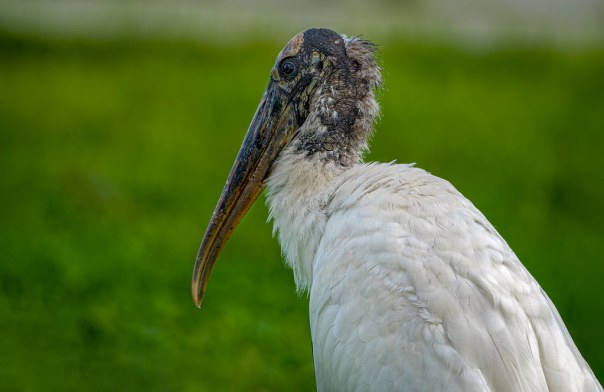As I was starting home from Merritt Island National Wildlife refuge yesterday morning, I decided to make one last stop along the causeway. Looking around, I noticed something in the distance rolling around in the water. I couldn’t tell what it was and I wasn’t carrying the long lens, so I walked over to the car to get it. I thought it’d be gone by the time I got back but it wasn’t. This is the first image I made:
 What it that?
What it that?
I still couldn’t see it really well in the view finder. I thought it might be a manatee’s head or maybe even part of a dolphin. Then I saw this:
So now I knew what it was! The bird struggled for several minutes trying to swallow that huge fish. It would hold it under water for a while (changing its grip?) before bringing it back up in the air. It eventually got it arranged just right and managed to get it all down. This was the fish’s final view of things – Circle of Life.
The weather on this trip was somewhat unusual. I almost always go over there in the mornings. One reason why is that it hardly ever rains early in the day. Most of our rain comes down in afternoon thunderstorms. But this time there was a big downpour as I drove around Black Point Wildlife Drive and even a rainbow!
Overall, birds are still a bit scarce out there. I did see some of our usual ones including Pie Billed Grebes, a Red-shouldered Hawk, Ospreys, Great and Snowy Egrets, Great Blue Herons, Tri-colored and Little Blue Herons, Mourning Doves, Common Gallinules, American Coots, a few gulls and terns, Anhingas, and (of course) Cormorants. And Jim Boland reports that there are two Bald Eagles hanging out near stop 11 on BPWD although I wasn’t looking for them and didn’t spot them. I also saw a few fast, un-identified tiny birds (UTBs?), a Belted Kingfisher, and some Blue-winged Teals – so maybe more winter visitors will arrive soon.
I’ll leave you with one more photo from the trip. I stitched this together from 21 frames made with my IR modified camera. I’m not sure who / what left that vehicle track there – maybe rangers doing some maintenance? Seems like a great place to get stuck. Anyway I think this gives you an idea of the landscape in the area.
 Black Point vista: Monochrome, IR, stitched panorama
Black Point vista: Monochrome, IR, stitched panorama
You can view many more of my Merritt Island National Wildlife photos in this album on flickr: https://www.flickr.com/photos/edrosack/albums/72157627776386723. And you can scroll for a long time through posts on this blog about MINWR and Black Point Wildlife Drive at this link: https://edrosack.com/category/photo-ops-in-florida/merritt-island-national-wildlife-refuge/
Thank you for stopping by and reading my blog. I hope you all are staying safe, and taking care of yourselves, your friends, and your families. And if you don’t recognize something, keep watching – you might get a photo out of it!
©2020, Ed Rosack. All rights reserved




































